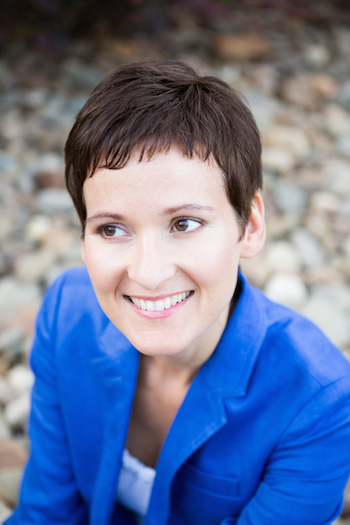Yoga through Physical Therapy Can Improve Postpartum Care in the United States
This post was written by H&W instructor Ginger Garner, MPT, ATC, PYT. Ginger will be instructing the course that she wrote on "Yoga as Medicine for Labor and Delivery and Postpartum" in Washington this August.

You may or may not realize that the United States has a very poor track record for postpartum care. In fact, the US has the worst track record for not only postpartum care, but for maternal and infant mortality and first-day infant death rate in the developed world (Save the Children 2013). Between 1999-2008, global mortality rates decreased by 34% while the US’s rates doubled for mothers (Coeytaux et al 2011).
In After the Baby’s Birth, maternal health advocate Robin Lim writes,
"All too often, the only postpartum care an American woman can count on is one fifteen minute appointment with her doctor, six weeks after she has given birth. This six week marker ends an arbitrary period within which she is supposed to have worked out most postpartum questions for herself. This neglect of postpartum women is not just poor healthcare, it is abusive, particularly to women suffering from painful physical and/or psychological disorders following childbirth."
Physical therapists can be influential change agents in improving current postpartum care. Likewise, yoga can be an instrumental part of a holistically driven care model. Coeytaux et al (2011), as well as other authors, clearly correlate the reduction of maternal mortality with improved postpartum care. The World Health Organization recommends that the postpartum checkup should include screening for:
- Back pain
- Incontinence (stress)
- Hemorrhoids
- Constipation
- Fatigue
- Breast pain
- Perineal pain
- Depression
- Painful or difficult intercourse
- Headaches
- Bowel problems
- Dizziness or fainting
A physical therapist is a vital team member in not only screening for many of the listed problems above, but in managing them. The World Health Organization clarifies care delivery by recommending the use of a biopsychosocial model.
Yoga is a natural and readily accessible methodology for treating the five facets of the postpartum mother through its ancient and time-tested version of the biopsychosocial model, which include physical, psychoemotional, energetic, intellectual, and spiritual or relational facets.
France has a postpartum model of care that the US should follow, which includes a typical 10-20 sessions of standard physical therapy care in the first months after birth. What’s more is France delivers this care plus in-home visits while spending less than the US for maternal care.
So how can physical therapists use yoga to provide optimal postpartum care?
First, advocacy and education are key. Advocating for patients to receive physical therapy services starts with educating the individual. Social media is a powerful way to get the word out about your unique services in postpartum care. Sharing research about postpartum physical therapy through the holistic model of yoga is also important.
Postpartum physical therapy through yoga can address the whole person, rather than just the diagnosis. Further, interdisciplinary interaction is fostered through this integral, team-approach care.
For example - In addition to the typical physical screening and intervention for postpartum physical therapy, the following variables are addressed through a yoga paradigm:
- psychoemotional care
- nutritional counseling
- energetic therapies
- intellectual education, and
- relational support
Postpartum physical therapy is perhaps more complex than other types of PT care because of the lack of research, education, and attention that has been historically given to laboring and new mothers. Social support, body, image, self-management, and self-efficacy are just a few of the ways that yoga can make a big impact on a mother’s postpartum health.
Ginger’s course, Yoga as Medicine for Labor, Delivery, and Postpartum provides evidence-based methodology used in prenatal and postpartum physical therapy practice and streamlines clinical decision-making and intervention through introduction of a yogic model of assessment. To learn more about Ginger’s course, visit Yoga as Medicine for Labor, Delivery, and Postpartum.
By accepting you will be accessing a service provided by a third-party external to https://hermanwallace.com./








































